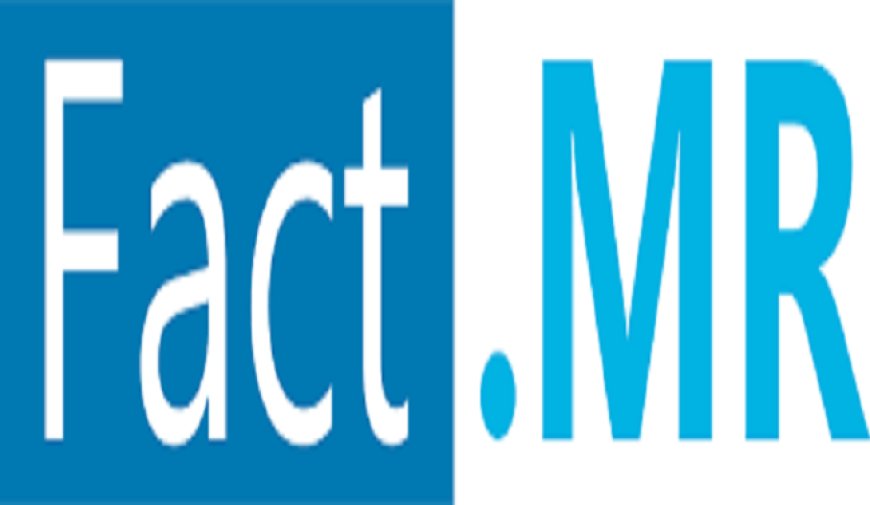Key Trends in the Global Thermoplastic Polyolefin Elastomers Market
The global thermoplastic polyolefin elastomers market is valued at USD 1.73 billion in 2023 and is projected to grow to USD 2.85 billion by the end of 2033. Sales of thermoplastic polyolefin elastomers worldwide are expected to increase at a compound annual growth rate (CAGR) of 5.1% from 2023 to 2033.

The global thermoplastic polyolefin elastomers market is valued at USD 1.73 billion in 2023 and is projected to grow to USD 2.85 billion by the end of 2033. Sales of thermoplastic polyolefin elastomers worldwide are expected to increase at a compound annual growth rate (CAGR) of 5.1% from 2023 to 2033.
In the ever-evolving landscape of materials and polymers, Thermoplastic Polyolefin (TPO) elastomers have emerged as a prominent player. These versatile compounds are known for their outstanding performance across a wide range of applications. As we delve into the insights of the TPO elastomers market, it becomes evident that they are witnessing steady growth and gaining significant traction among manufacturers, engineers, and designers. This article takes a closer look at the market, its growth trajectory, opportunities, supply and demand trends, notable developments, and the intricate value chain that powers this robust industry.
Want Full Report? Enquire Here- https://www.factmr.com/report/thermoplastic-polyolefin-elastomers-tpo-market
Market Growth
The TPO elastomers market is experiencing steady growth due to several factors. Manufacturers have recognized the exceptional properties of TPO elastomers, such as their high impact resistance, weatherability, and UV resistance. These qualities make TPO elastomers ideal for applications in the automotive, construction, and roofing industries. In addition, the growing demand for lightweight materials to improve fuel efficiency in the automotive sector has further boosted the market. TPO elastomers' adaptability and cost-effectiveness also contribute to their remarkable growth, making them an appealing choice for various industries.
Market Opportunities
In the TPO elastomers market, numerous opportunities beckon both existing and new entrants. As environmental concerns rise, TPO elastomers present an environmentally friendly alternative. The recyclability and sustainable nature of TPO elastomers align with the global shift towards greener and cleaner solutions. Furthermore, the rapid expansion of the electric vehicle (EV) market offers a significant growth avenue. TPO elastomers play a vital role in EV battery components and are well-suited to withstand the unique challenges presented by the electric vehicle industry. Exploring these opportunities can result in substantial gains for businesses in the TPO elastomers market.
Key Companies Profiled in This Report
- HEXPOL AB
- RTP Company
- Mitsubishi Chemical Corporation
- Celanese
- Elastron TPE
- Borealis
- Solvay S.A.
- Others
The United States is expected to witness a 4.8% compound annual growth rate (CAGR) in the consumption of thermoplastic polyolefin elastomers in the foreseeable future. This growth is primarily attributed to increased investments in the medical industry. Notably, leading TPO elastomer manufacturers like LyondellBasell, Formosa Plastics, Borealis, Dow, and ExxonMobil have established strong partnerships with both automakers and medical device manufacturers across the nation. Additionally, the geographical proximity of these manufacturers to their clients contributes to reduced transportation costs, thereby enhancing the overall profit margins of TPO elastomer producers in the U.S.
Market Demand
Initially designed with a focus on the automotive industry, thermoplastic polyolefin elastomers are uncomplicated polymer compounds. They involve blending elastomers, fillers, and other components to create specific TPO elastomer formulations for diverse applications. However, the intricate value and supply chain of TPO elastomers, with various intermediaries, contribute to the product's overall cost and may decrease user confidence.
Furthermore, the availability of alternative materials, such as compounded TPOs, POEs, and thermoplastic vulcanizates (TPVs), possessing similar properties, can be adopted by automakers and building/construction stakeholders at a more economical price. These factors, combined with potential risks in the TPO elastomers market, may present challenges for robust market expansion in the years ahead.
Notable Developments
The TPO elastomers market has witnessed several notable developments that reflect its ongoing innovation and adaptation. Notably, advancements in compounding technologies have led to the production of TPO elastomers with enhanced performance characteristics. These innovations allow TPO elastomers to cater to a broader spectrum of applications. Additionally, collaborations between material manufacturers and end-users are resulting in customized TPO elastomers that address specific industry requirements. These developments underline the industry's commitment to staying at the forefront of materials technology.
Competitive Landscape
Leading providers of TPO elastomers are heavily investing in research and development, as well as technological innovations, to offer a diverse range of solutions while adhering to stringent safety regulations. Their primary focus is on ensuring quality control, setting high product standards, optimizing supply chain management, and continually introducing new product offerings. To strengthen their market presence and effectively meet growing customer demands, major industry players are leveraging partnerships and collaborations. For instance, in 2019, Borealis made a significant investment in a polypropylene (PP) compounding plant in the United States, enhancing their supply capabilities for TPOs, particularly benefiting tier-1 automakers in the Southeastern U.S. In 2020, SABIC introduced an innovative polyolefin elastomer-based solution for liquid containers with superior leak resistance, further solidifying their competitive position. Mitsubishi Chemicals developed ZELAS, a high-performance thermoplastic with substantial rubber content derived from olefins, which finds applications in construction, medical, and automotive sectors. ExxonMobil has also expanded its thermoplastic elastomer production facilities in the U.S. to meet the rising demand for plastic automotive parts, demonstrating its commitment to the evolving market needs.












